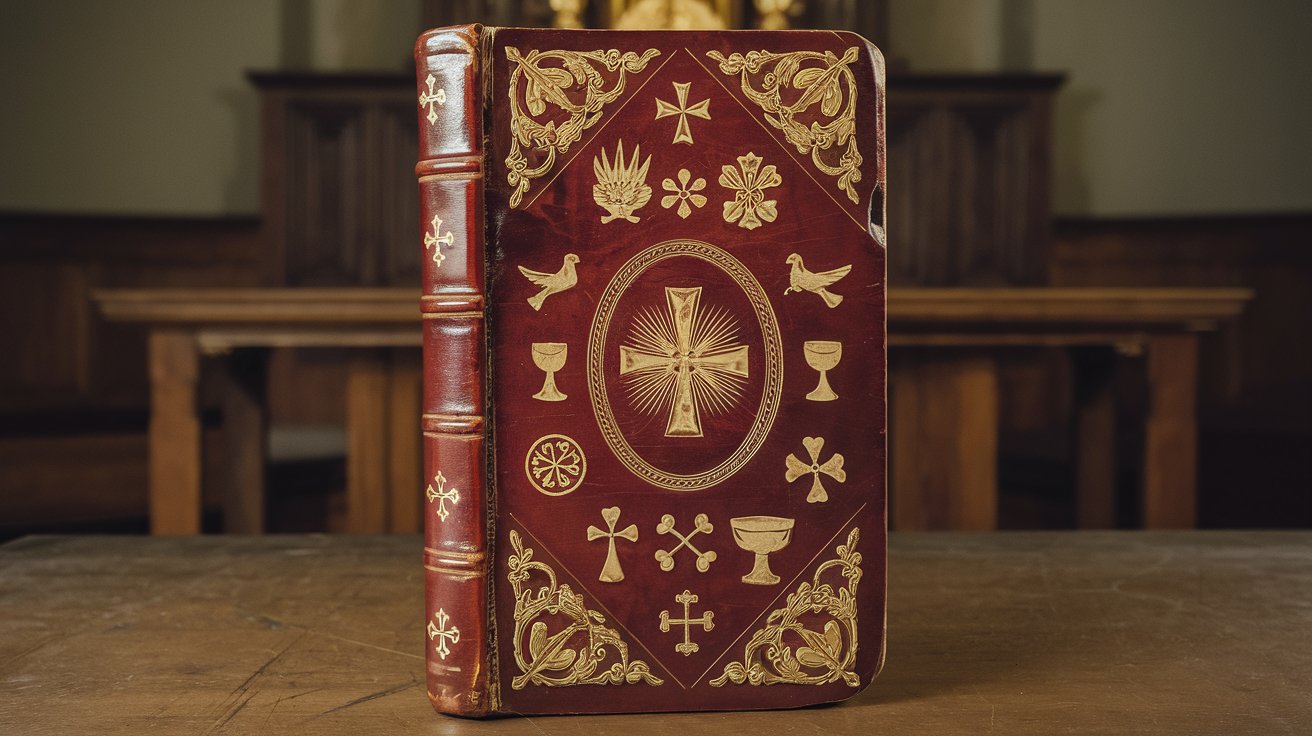
What is a sacramentary? A sacramentary is a special book used in Christian worship, especially for celebrating the Eucharist. It contains prayers, readings, and rituals that guide the service. Originating in the early Christian Church, sacramentaries have evolved over centuries, reflecting the diverse traditions and practices of different Christian denominations. From handwritten manuscripts to printed editions, these books have played a crucial role in shaping liturgical practices. They are often beautifully decorated, making them not just religious texts but also works of art. Today, sacramentaries continue to be used worldwide, connecting modern worshippers with their historical roots.
What is a Sacramentary?
A sacramentary is a liturgical book essential for the celebration of the Eucharist in Christianity. It contains prayers, readings, and rituals. Let's dive into some fascinating facts about sacramentaries.
-
Historical Origins: The earliest sacramentaries date back to the 4th century. These initial texts were simple collections of prayers and rituals used by early Christians.
-
Development Over Time: Over centuries, sacramentaries evolved, becoming more detailed and standardized by the Middle Ages. They included specific instructions for the Eucharistic celebration.
Types and Content of Sacramentaries
Different traditions and regions have their own versions of sacramentaries, each with unique content and structure.
-
Types of Sacramentaries: Various types exist, such as the Roman Missal, the Byzantine Rite, and those used in Eastern Orthodox and Oriental Orthodox traditions. Each reflects its unique liturgical practices.
-
Content: A typical sacramentary includes prayers, scripture readings, rituals for the Eucharist, and hymns or chants. These elements guide the entire Eucharistic celebration.
-
Liturgical Year: Sacramentaries often organize content according to the liturgical year, covering seasons like Advent, Lent, and Easter, ensuring the prayers and readings align with the church calendar.
Regional and Language Variations
Sacramentaries reflect the diversity of Christian worship across different regions and languages.
-
Regional Variations: Different regions and denominations have unique sacramentaries, influenced by local traditions and cultural practices.
-
Language: Over centuries, sacramentaries have been translated into various languages, though many still use their original languages, preserving historical authenticity.
Artistic and Manuscript Traditions
Sacramentaries are not just liturgical texts; they are also works of art and historical documents.
-
Illustrations and Decorations: Many sacramentaries feature elaborate illustrations and decorations, enhancing the spiritual experience of worship.
-
Manuscript Tradition: Before printing, sacramentaries were handwritten in illuminated manuscripts. These manuscripts are prized for their artistic and historical value.
Impact of the Printing Press
The invention of the printing press revolutionized the production and distribution of sacramentaries.
- Printing Press Impact: The 15th-century printing press made sacramentaries more widely available and standardized, transforming how they were produced and used.
Notable Sacramentaries
Some sacramentaries have become particularly well-known and influential.
-
Roman Missal: The Roman Missal, used by the Roman Catholic Church, is one of the most famous sacramentaries. It has undergone several revisions, with the latest in 2011.
-
Eastern Orthodox Tradition: The Eastern Orthodox Church uses sacramentaries like the Liturgy of St. John Chrysostom, reflecting its unique liturgical practices.
-
Oriental Orthodox Tradition: Oriental Orthodox churches have their own sacramentaries, which often include unique liturgical practices and historical contexts.
Changes and Modern Usage
The Reformation and modern technology have influenced how sacramentaries are used today.
-
Reformation Impact: The Protestant Reformation led to significant changes in sacramentaries, with many Protestant denominations simplifying or eliminating certain elements of the Eucharistic celebration.
-
Modern Usage: Despite modern liturgical books and digital resources, many churches still use traditional sacramentaries to connect with their historical and cultural heritage.
Scholarly and Artistic Significance
Sacramentaries are valuable for both scholarly study and their artistic elements.
-
Scholarly Study: Liturgical scholars study sacramentaries to understand their historical development, theological content, and cultural significance.
-
Artistic Significance: The beautiful artwork in sacramentaries, including intricate illustrations and calligraphy, offers insights into the spiritual and cultural context of their creation.
Preservation and Digital Resources
Efforts to preserve and digitize sacramentaries ensure their longevity and accessibility.
-
Conservation Efforts: Historical sacramentaries are preserved in libraries and museums, carefully conserved for future generations.
-
Digital Resources: Digital resources have made sacramentary content more accessible online, facilitating the creation of new digital sacramentaries.
Global Use
Sacramentaries are used worldwide, reflecting the universal nature of Christian worship.
- Global Use: Churches around the world use sacramentaries, highlighting the diversity of liturgical practices across different regions and denominations.
The Enduring Significance of Sacramentaries
Sacramentaries hold a special place in Christian worship. They’ve evolved from simple prayer collections in the 4th century to detailed liturgical guides. These books, like the Roman Missal and the Liturgy of St. John Chrysostom, reflect the diversity of Christian traditions. They’re not just about prayers and rituals; they also include scripture readings, hymns, and chants. The introduction of the printing press made them more accessible, yet many churches still cherish traditional, handwritten versions. Illustrated sacramentaries are prized for their artistic value. Modern technology has brought these ancient texts into the digital age, making them available online. Despite changes over centuries, sacramentaries remain a vital link to the past, preserving the rich heritage of Christian liturgy. They continue to be a source of study, worship, and inspiration for believers worldwide.
Was this page helpful?
Our commitment to delivering trustworthy and engaging content is at the heart of what we do. Each fact on our site is contributed by real users like you, bringing a wealth of diverse insights and information. To ensure the highest standards of accuracy and reliability, our dedicated editors meticulously review each submission. This process guarantees that the facts we share are not only fascinating but also credible. Trust in our commitment to quality and authenticity as you explore and learn with us.


